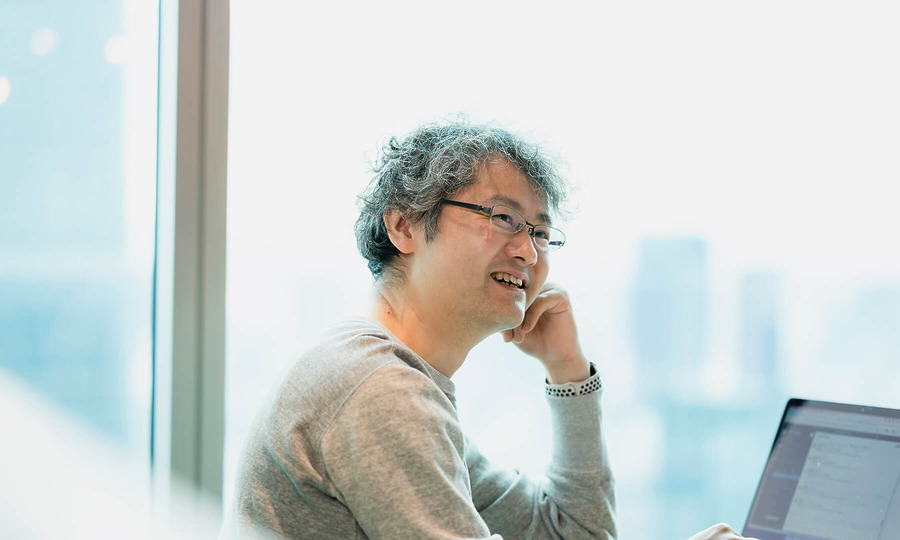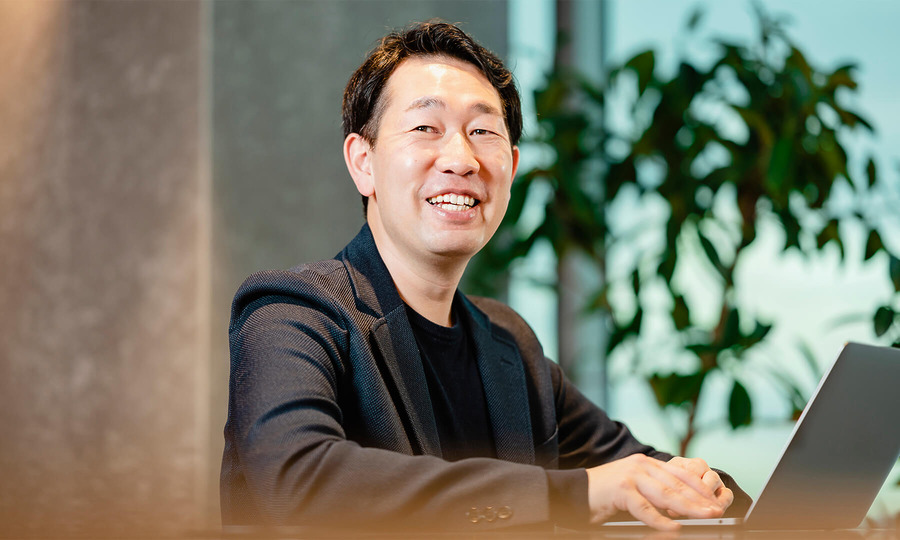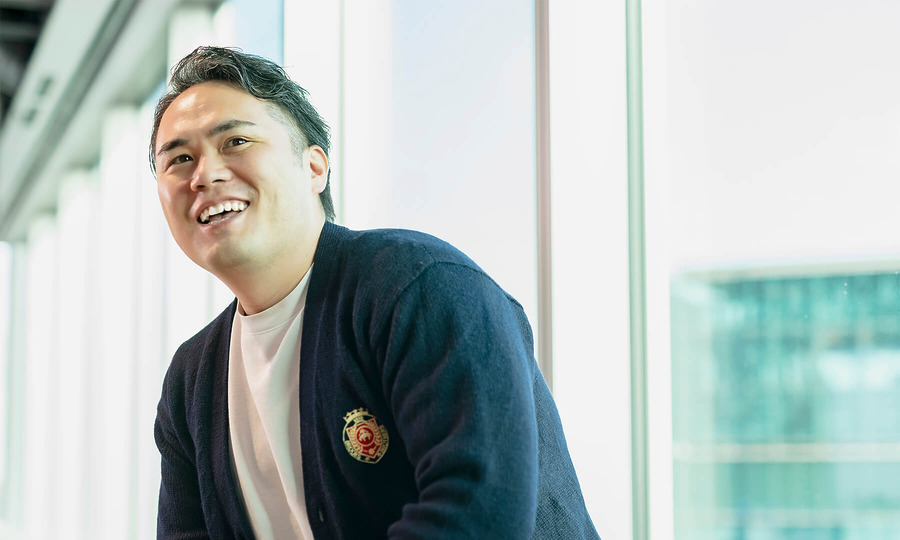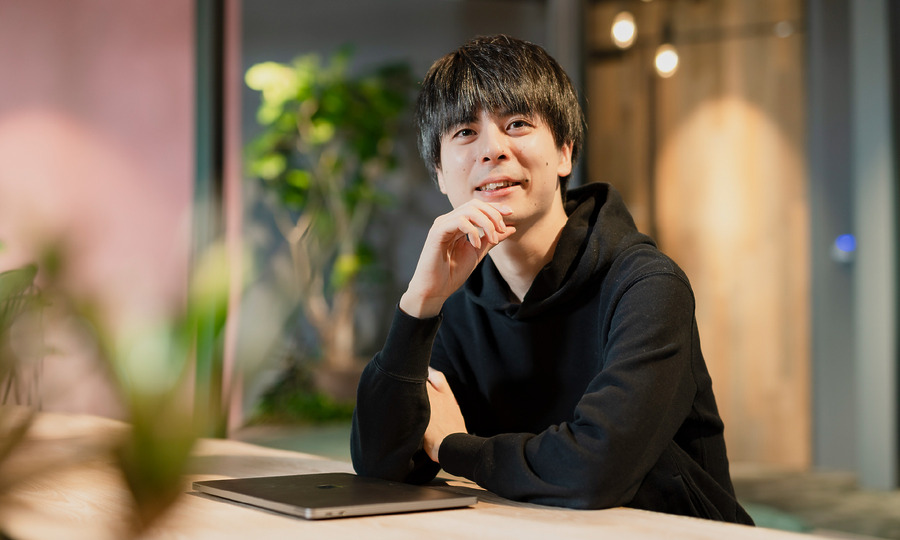Mid-career AI engineer (2017)
Hirohisa Inamoto

I heard something like this
-
・What is your background?
-
・ What is your current job?
-
・ What do you value as an engineer?
-
・ What are your future goals?
In the real estate industry, there are problems that can be solved as engineers
Immediately after joining Ricoh as a new graduate in 2002, I was in charge of research and development of image processing technology aimed at improving the image quality of copied images. Shortly after I joined the company, I became interested in CV (computer vision), a type of AI that is now called, and started self-studying. I was happy that I was able to formally work with the support of the managers. While conducting research, I repeatedly proposed solutions to other departments so that they could use CVs, which are difficult to use. In 2014, he was transferred to the new business planning department through an internal recruitment. As a product manager of the real estate VR service "theta360.biz", I did everything from sales to development direction.
I joined GA technologies Co., Ltd. in 2017. It all started when a recruitment agency told me that a real estate venture was looking for an image processing engineer. I was frustrated with the slow decision-making process that is common in large companies, so I was first attracted to the fact that it was a venture. I also visited many real estate companies while selling the services I was working on at the time, so I was fascinated by the energy that is unique to the industry. Furthermore, I knew how behind the real estate industry was technologically, so I was also strongly attracted by the fact that there were many problems that I could solve as an engineer. While I thought it was a rare opportunity to meet my needs, I was unsure because I was not confident that I could make it at a venture. In the end, my wife's words, "Even if you fail to change jobs and your annual income decreases, you can survive if you both work," gave me the encouragement to decide to change jobs.
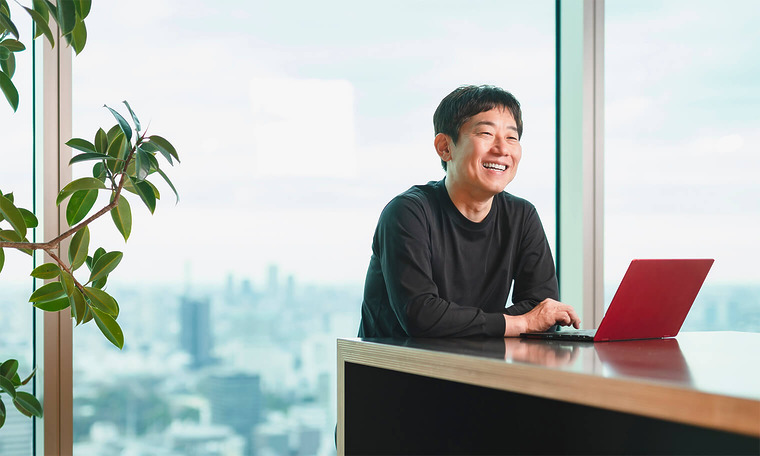
Share on-site issues and use research and development
As head of the Advanced Innovation Strategy Center (AISC), our research and development department, I am promoting digital transformation within the company.
I am currently in charge of the direction of the research and development organization. We aim to create a world where everyone in the company can reduce mechanical work to the utmost and focus on high value-added things that only humans can do. Technology that is frequently used within the company should also be used by other companies in the same industry. We believe that we can change the industry by providing our technology, and some of the technology we have actually developed is provided to other companies for a fee.
While the work is rewarding, it is often difficult. For example, what researchers think is useful may not be accepted in the field. Also, requests from the field may not necessarily be ideal for the field. It is generally said that "it is difficult to apply research results to business," but at GA technologies Co., Ltd., researchers get as close to the field as possible and solve problems, and in addition to research, they develop prototypes that people in the field can use. They are implementing a strategy of brushing up the prototypes together with the field.
In general, it is true that many researchers do not want to communicate with people in the field in order to concentrate on their research. Therefore, I focus on recruiting members who can tolerate the conflicting attributes of research and the field, and discussing with members on a daily basis. It's a lot of hard work, but being able to directly see how the members are improving their work and making people happy in the field makes me supremely happy.

Continuing to study is the destiny of an engineer
Technology sometimes suddenly becomes obsolete, so I believe that it is the destiny of an engineer to keep studying. Around the time I entered the workforce, my seniors at the research institute were creating an image processing library for in-house work, saying that their scope of work was narrow, but their expertise was extremely high. However, after a while, open source emerged. The technical field has become a commodity, and seniors have to learn things in different fields in a hurry. I always think that what I said will happen to me, so I try not to miss continuous input.
It is also important to follow the trends of AI technology, but the AISC to which we belong includes the word “Strategy”. Therefore, I think it is very important to learn not only what AI technology can do, but also what other means can do. I'm always keeping my antennae up to see if it's possible to make things that weren't possible before possible, or if they could be made easier, by using various algorithms other than AI and web services from other companies.
I want many people to know about the existence of AISC
What I regret is that GA technologies Co., Ltd. is not widely recognized as a company that can utilize technology. I don't think there is any other real estate company that has so many engineers and develops products for both inside and outside the company. I also believe that there is no other company that has so many researchers and is sincerely striving to acquire technology and data in the real estate field. In fact, when we introduce our technology and products to other companies, they are surprised at the high level of technology, and we often have them say, "I want to use it myself." Also, when we introduce AISC's technology at events for owners that we hold regularly, many of the owners are impressed by the technology.
In order to change this situation, we will strive to acquire more useful technology in the field than ever before. At the same time, we will increase our communication with the outside world, and I would be happy if GA technologies Co., Ltd. and the real estate industry were recognized as a new place for researchers to work.
* This article is based on information at the time of the interview. Please note that it may differ from the latest information.
Mid-career AI engineer (2017)
Hirohisa Inamoto
Joined Ricoh as a new graduate in 2002 and engaged in research and development of image processing and recognition technology for over 10 years. After that, he became a new business planner. Joined our company in 2017. Developed an automatic reading system for Real estate advertising and an automatic transcription system for floor plans. Also responsible for introducing AI and RPA to Purchasing operations systems. Since 2019, he has been the head of the Advanced Innovation Strategy Center.

Mid-Career
Mid-career employee interview
list
-
Continuing to deal with products with integrity
![]()
Joined mid-career as an engineer (2018)
Ken Kakizaki
-
Contribute to building "the top company in the world" from the human resources area
![]()
HR mid-career hire (2018)
Mio Yamazaki
-
improve product quality,
impart correct knowledge![]()
Mid-career hire as Executive Officer (2020)
Toshiaki Yui
-
Become the company's growth engine in the aspect of communication
![]()
Mid-career hire as Executive Officer (2018)
Yoshio Kawamura
-
Keep choosing
the way even 1% closer
to the "best"![]()
Marketing mid-career (2021)
Takato Matsumoto
-
Business Value
Lay the foundation for the future when tackling challenges
-
Our Story
Lay the foundation for the future with all the history we have built
-
Company Approach
With technology and manpower we build our own future
-
Message
Change the world with technology.
This belief has never changed since the day the company was found. -
Executive Officers
The people who lead the group to move forward.
Be aggressive and passionate for future challenges
-
About us
Here you can find out the basic information about the corporation and the services we provide.
